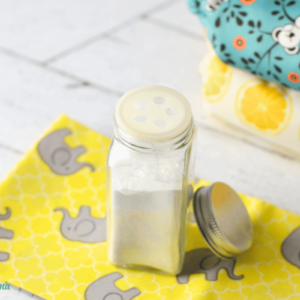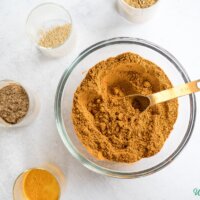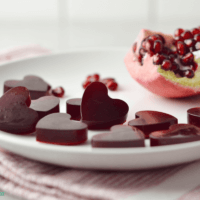
If your skin has ever felt more like sandpaper than a baby’s bottom, you know how miserable dry skin can be. Dry skin can cause all sorts of discomfort, including peeling, flaking, cracking, redness and itching.
The good news is you can avoid that all-over itchy feeling by taking time to keep your body well hydrated from the inside out
The obvious way to get rid of dry skin externally is to moisturize regularly. If you can remember to slather on the moisturizer right after you get out of the tub, even better. Other steps you can take to soothe your dry skin include taking shorter baths and using warm water instead of hot to shower or bathe.
But the old adage that it’s what’s on the inside that counts also applies to the health of your skin. What you put into your body can help get rid of dry skin and prevent new dry patches from forming. Since you need to eat and drink anyway, you might as well get the most from your daily diet, and that means using your intake to output healthy skin. What you eat and drink can not only boost your energy and your immune system, it can also help keep your skin hydrated.
In addition to keeping your skin soft and supple, hydrating from the inside out is important to your general health and bodily functions. If you get dehydrated, you can wind up weak and dizzy. And in some extreme cases, if you lose too many fluids, you might require a trip to the emergency room for fluid treatment.
You can avoid dehydration — and dry, scaly skin to boot — by maintaining good hydration levels. Keep reading to find out just how helpful hydration can be.
Hydration and Skin Dryness
With all the hype on TV and in magazines about how much water you need to drink each day, you might think that people are like marine mammals, unable to survive on land. Obviously that’s not the case, but even though you stroll around on dry land, your skin and the rest of your body still need water.
Keeping hydrated means getting enough water so that your body can function efficiently. Researchers disagree on how much water is enough to stave off dry skin, but at the very least you should need from 4 to 8 cups (about 1 to 2 liters) of liquid a day to keep reasonably hydrated, and that liquid should preferably be water. The Institute of Medicine recommends that women drink nine cups of plain water everyday and men drink 13. The bottom line is that you need water, and lots of it, to be healthy.
There are several of reasons why you may not be getting enough water to make keep your skin healthy. Anything that makes you sweat a lot, such as exercise or being out in the sun, causes you to lose fluids. Getting sick can dehydrate you too, particularly if you have a fever, diarrhea or are vomiting. In such cases, you might need to drink even more water to replace what was lost.
Remembering to drink enough water can sometimes be a chore, but there are a couple of different ways to make the job easier. First, you can use a set of guidelines, perhaps something your doctor recommends or guidelines from a reputable source like the Institute of Medicine, and follow them every day. You can also make it a point to drink one or two glasses of water with every meal. Keep a water bottle on your desk at work or in your car, and sip often. If you’d like a little flavor with your water, try adding a lemon wedge or a splash of fruit juice.
If you’re thinking it would be nice to have some food to go with all that water, keep reading to find out which foods can also help you stay hydrated.
Foods That Moisturize Skin
If you want to do everything you can to moisturize your skin, don’t stop at applying moisturizer and drinking a lot of water. You can make “you are what you eat” your new mantra and choose foods based on how they will help your skin.
To get the most out of your daily meals, try including the following items in your diet:
Omega-3s — Your skin has a natural barrier to help retain moisture, and that barrier contains omega-3 fatty acids. Try adding flax seed, salmon and walnuts to your diet to boost your omega-3 intake and moisturize your skin [source: Fries]. Some research suggests that foods that have vitamin E in addition to omega-3s, such as nuts and whole grains, provide an extra skin booster [source: Bouchez: Feed].
Spinach –Move over, Popeye, because spinach isn’t just for making your muscles big. In addition to being chock full of vitamins, such as skin-strengthening vitamin A, spinach has plant compounds that — according to some research — help to keep your skin healthy [source: Mayo Clinic: Eating Well].
Berries –It turns out that berries aren’t just tasty and fun to eat; they’re also really good for healing your skin. Berries not only contain juice to help you hydrate, but they’ve also got antioxidants and vitamin C that protect your skin [source: Frank]. The antioxidants and other chemicals in the berries work to help your skin cells stave off damage [source: Bouchez: Foods].
What you put in your mouth can help your skin, but if you want to keep that healthy glow, there are also some foods and beverages you should avoid. Read the next page to learn which items to leave on the grocery store shelf.
Foods and Drinks That Dry Skin Out
You’ve got the hang of what to eat and drink to keep you skin moist, but to keep on properly moisturizing from the inside out, you also need to know what to avoid.
Alcohol acts as a diuretic, meaning it causes your body to create more urine, sending you on more frequent trips to the bathroom. Urinating more than usual can dehydrate you by causing you to lose fluid more quickly than normal [source: Mayo Clinic]. So, if you choose to consume alcohol, be sure to drink plenty of water with it to replace any lost fluids.
Caffeine has long been believed to act as a diuretic also, but this might not be so. It acts only as a mild diuretic, and you would have to consume more than 4 to 7 cups of a caffeinated drink per day in order to see the effects. So, you don’t necessarily have to give up that jolt of java, but you should at least be aware of how much caffeine you’re drinking and what it can do to your skin. Caffeine lurks in coffee, tea, soda and energy drinks, so you may be consuming more of it than you think.
The bottom line with alcohol, and caffeine in extreme cases, is that if you are dehydrated, your skin isn’t getting enough moisture and it can dry out. If you’re trying to moisturize from the inside out, you will want to limit these drying culprits, or avoid them altogether.
Overall, drinking plenty of water, eating a variety of healthy foods and watching your caffeine and alcohol intake will put you on the road to healthy, moist and supple skin. For more information on moisturizing inside and out, follow the links on the next page.





